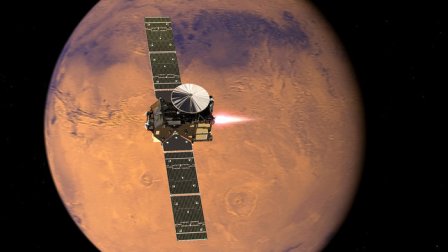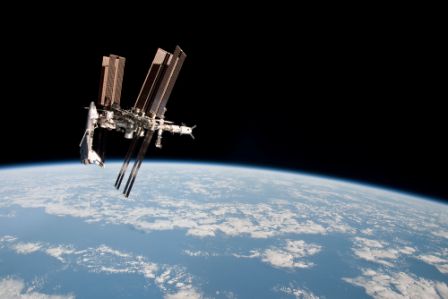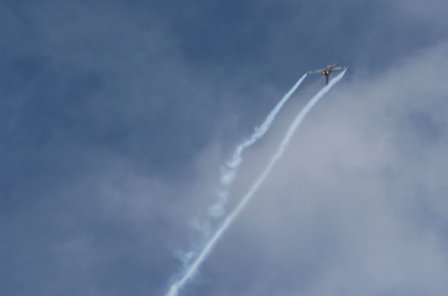
The ExoMars Trace Gas Orbiter (TGO) and its entry, descent and landing demonstrator module, Schiaparelli, approach Mars. Photo: ESA/ATG medialab
DARMSTADT, GERMANY (AFP): Ground controllers waited anxiously for news on Thursday on the status of a tiny European craft which touched down on Mars as part of a daring quest for life on the Red Planet, but may not have survived the impact.
The paddling pool-sized "Schiaparelli" lander, a trial-run for a Mars rover to follow, was scheduled to land at 1448 GMT on Wednesday after a scorching, supersonic dash through Mars' thin atmosphere.
Hours later, the European Space Agency (ESA) confirmed the craft had touched down, but said it was emitting no signal -- evoking the ghost of Europe's first, failed, bid to land on Mars 13 years ago.
"The lander touched down, that is certain," ESA's Schiaparelli manager Thierry Blancquaert told AFP.
"Whether it landed intact, whether it hit a rock or a crater or whether it simply cannot communicate, that I don't know," he said from mission control in Darmstadt, Germany.
Blancquaert said he was "not too optimistic" of receiving a clean bill of health.
This would be Europe's second failed Mars landing in a row, joining a string of other unsuccessful attempts by global powers to explore our planetary neighbour's hostile surface.
The British-built Beagle 2 robot lab disappeared without trace after separating from its mothership, Mars Express, in 2003. Its remains were finally spotted in a NASA photograph last year.
Schiaparelli had travelled seven months and 496 million kilometres (308 million miles) onboard the European-Russian Trace Gas Orbiter (TGO) to come within a million kilometres from Mars on Sunday, when it set off on its own mission to reach the surface.
The pair comprised phase one of the ExoMars mission through which Europe and Russia seek to join the United States in probing the alien Martian surface.
The TGO was successfully placed in Mars orbit on Wednesday, to cheers and applause from ground controllers some 170 million kilometres away.
"It's a good spacecraft in the right place, and we have a mission around Mars," flight operations manager Michel Denis announced.
Schiaparelli's silence put a damper on the celebrations, though ESA officials tried to look on the bright side.
"Whatever is going to happen, we will have learnt a lot of things because we will have data recorded of the descent," spokeswoman Jocelyne Landeau-Constantin told AFP.
"So, we already have quite a bit of lessons learnt."
For ESA director-general Jan Woerner, "this is typical for a test".
"We did this in order to get data about how to land with European technology on Mars, therefore all the data we will get this night... will be used to understand how to manage...
the next landing when we're going with the rover."
Schiaparelli's landing was designed to inform technology for a much bigger and more expensive rover scheduled for launch in 2020 -- the second phase and high point of ExoMars.
The rover will be equipped with a drill to look for clues of life, past or present, up to a depth of two metres.
The TGO, in turn, will aid the search for life by sniffing atmospheric gases potentially excreted by living organisms -- however small or primitive.
Its science mission will start in early 2018.
 Previous Article
Previous Article Next Article
Next Article













The Indian Air Force, in its flight trials evaluation report submitted before the Defence Ministry l..
view articleAn insight into the Medium Multi-Role Combat Aircraft competition...
view articleSky enthusiasts can now spot the International Space Station (ISS) commanded by Indian-American astr..
view article